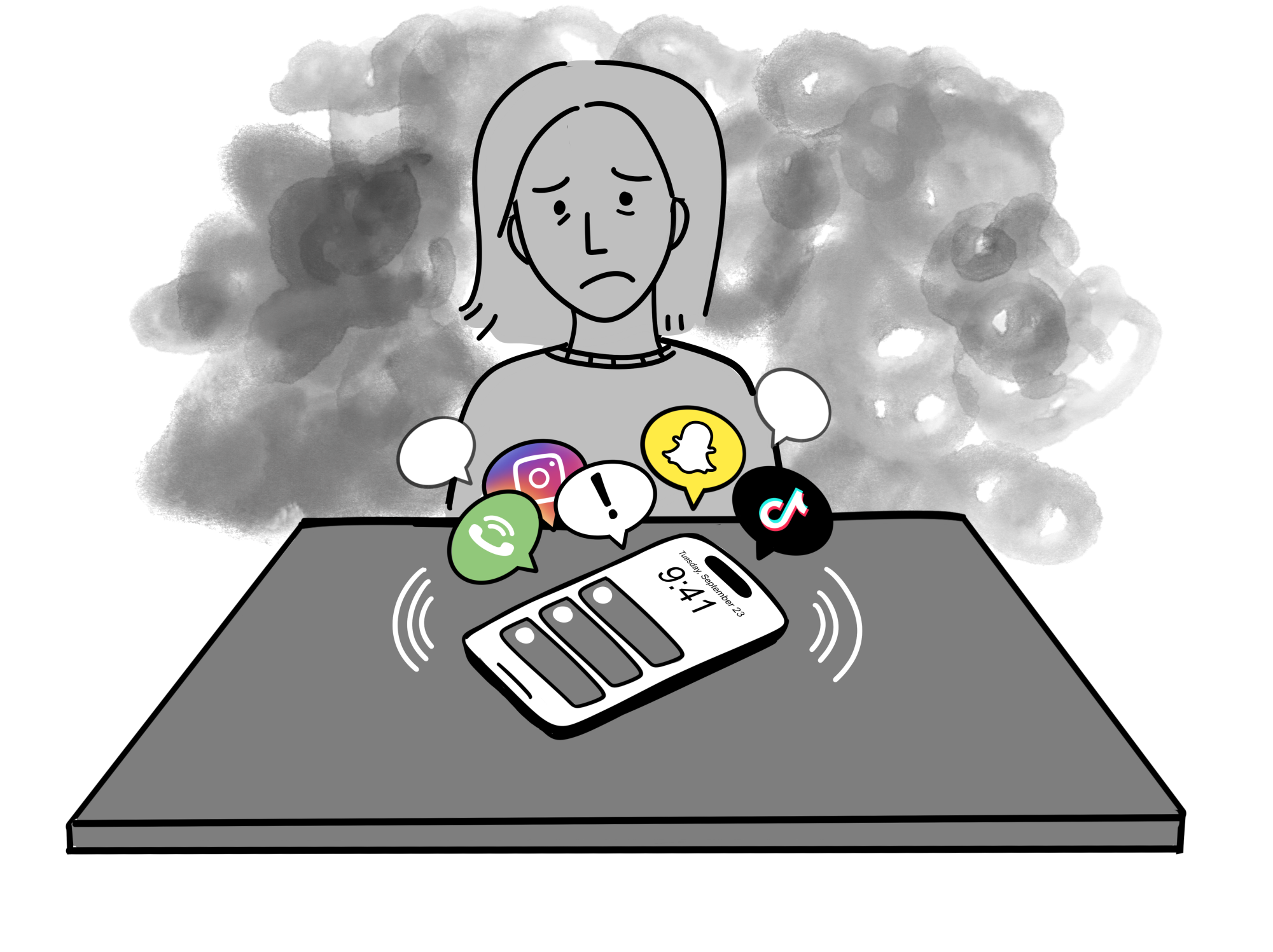
The quiet in LM classrooms isn’t peaceful—it’s unnerving. It’s not quite dystopian, but it feels rather close. Constant buzzing and bright screen glares may have ceased, but only because students’ phones have been stripped away and lined up in caddies. More than just the noise, this scenario reflects a deeper lack of trust, showing that students cannot be trusted to manage even their own phone usage. This forced and artificial calm in classrooms does nothing to prepare students for life outside the classroom. So much of high school is based on preparing us for the next phase in our lives. Yet in a society immersed with information and technology at every turn, how is a high school that shields us from the very tool that shapes the world around us equipping us for the future? The reality is that the real world does not have caddies to lock your phone away; students will enter a world where self-control and discipline are what determine your success. The best way for students to begin practicing those skills is to begin with little things, like knowing limits and when to put your phone away. The world is evolving at such a rapid rate that we must begin to accept the facts. Whether we become overly dependent on our phones or not, this crucial piece of technology has become so tethered to every facet of our lives, learning and work included. Changing a single policy in a school, no matter how strict, cannot undo the reality that technology is central to modern life. Phone usage has essentially become a soft skill in a world that requires mastery, and if not, you will simply fall behind. Policies such as these not only fail to prepare students but also actively signal distrust, treating teens as if they cannot be entrusted with the very skills the world so desperately demands.
It’s not difficult to see why LM and many other schools have chosen to implement a stricter phone policy. Growing concerns about the mental health effects of excessive phone use have pushed schools to reconsider how much access students should have during the day. As Jonathan Haidt argues in The Anxious Generation, the steep rise in depression, anxiety, and lack of focus is closely related to the widespread adoption of cell phones. From this perspective, restricting phone access during school hours is a matter of protecting students’ well-being. Critics like The Guardian US technology editor Blake Montgomery argue that Haidt oversimplifies the issue, mistaking causation for correlation. In addition, Montgomery claims that the book completely overlooks the smartphone’s ability to promote creativity and connection.
What the district fails to see is that addressing a lack of focus is best done through sparking curiosity and not removing distractions. LM is already an academically successful institution filled with motivated students who are dedicated to their craft. For most, the willingness to stay focused is already there; what’s more relevant is the material put in front of them. When learning is engaging and catered towards students’ interests, students are less likely to reach for a device in the first place.
The district has missed the mark because of a generational divide. Adults grew up in a world without the technology we use today, and accordingly, their idea of “normal” or “healthy” adolescent lifestyles reflects that. The norms of adolescent life are circumstantial, and basing them on past standards completely fails to recognize the shifting needs of each generation. Without acknowledging this divide, policies can hinder the growth of the very people they are supposed to serve.
Nonetheless, this does not mean that schools should ignore the problems that phones very well can cause. But with this in mind, there are more balanced solutions to this problem than outright confiscation. Most obviously, reverting to the “Off and Away” policy during class time remains a viable option and won’t strip phones away from students at the start of each set. Giving students the responsibility of putting their phone away themselves may seem small, but makes a significant difference. While it is evident that LM is not progressing towards a point where phones can be integrated into education anytime soon, at a minimum, giving students autonomy over their own devices promotes trust and encourages responsible use, rather than forcing compliance.
Banning phones does not shield students from the world when they are already immersed in it; while schools can limit distractions, they cannot erase reality. If LM truly wants to prepare students for the future, it must trust them to use technology responsibly, harness curiosity over control, and recognize that these skills are what will determine who thrives in tomorrow’s society.





